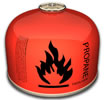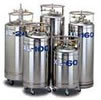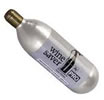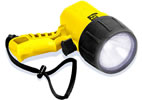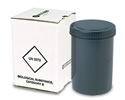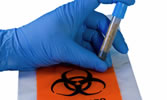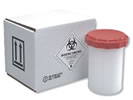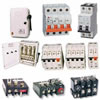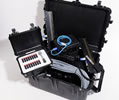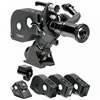MODULE 3 || Limitations On Dangerous Goods Travelling By Air
Most dangerous goods can be carried on an aircraft, provided they are identified, packed, labelled and documented in accordance with the IATA Dangerous Goods Regulations. However, there are limitations on the various methods in which dangerous goods are transported by air.
1). Forbidden Dangerous Goods
Forbidden dangerous goods are articles or substances that, under normal conditions encountered during flight may:
- explode;
- dangerously react;
- produce flame or dangerous evolution of heat or dangerous emission of toxic, corrosive or flammable gases or vapours.
Such substances and articles are forbidden for air transport under any circumstances. The IATA Dangerous Goods Regulations lists dangerous goods that are forbidden as follows:
- Dangerous goods articles and substances that are forbidden under any circumstances.
- Dangerous goods that are forbidden on passenger aircraft but may be transported on a cargo aircraft only.
- Dangerous goods that are forbidden, but may be transported with the prior approval of the appropriate competent authority, e.g. CASA.
It is the shipper's responsibility to correctly classify the dangerous good and determine if it is forbidden or not. It is the operator's responsibility to check that the shipper has done so correctly by using an Acceptance Checklist (this is covered in more detail in a later module).
2). Hidden Dangerous Goods
The aim of this course to reduce the risk associated with carrying dangerous goods on board an aircraft. Many people are unaware that some common articles, goods and substances are classified as dangerous goods. These are referred to as “hidden dangerous goods”.
Approximately 95% of all dangerous good incidents relate to undeclared dangerous goods in cargo and forbidden items in passenger bags!
Quite often, passengers can carry dangerous goods and be unaware of the potential hazards they pose on board an aircraft.
Guest Services and Check-in Staff should always be alert to the type of person that is checking-in. Perhaps that backpacker checking in has a camping stove in their backpack; or maybe the tradesman flying to a mine site has power tools his bag containing lithium batteries.
There are many other examples in the list below in regard to hidden dangerous goods. It is very important to check for these kinds of 'hidden' dangerous goods. Guest Services and Check-in staff should always ask passengers, "Are you carrying any dangerous goods or any spare batteries?" You should then elaborate by asking further questions in relation to specific dangerous goods that the passenger could be carrying.
The following pictorial list is an example of 'hidden' dangerous goods. This list is by no means complete and you should always be aware of the possibility of hidden dangerous goods contained within cargo as well as within carry-on and checked baggage.
|
3). State and Operator Variations
Countries are referred to as 'States' and airlines are referred to as 'Operators' in the IATA DGR.
Both State (country) and Operator (airlines) may impose further restrictions on the transport of dangerous goods. These extra restrictions are referred to as 'variations'.
Variations are listed in the IATA DGR and they sometimes change, depending on the State or Operator's individual requirements. This means that a shipper sending dangerous goods from one country (State) to another country (State) via an airline (Operator) must check the current IATA DGR for any specific variations that may apply. The shipper must also check for variations specific to the Operator that is being used to transport the dangerous goods.
Below is the list of all Australian (State) variations that are applicable to the transport of Dangerous Goods. A complete list of State and Operator variations can be found in Section 2.8.2 and 2.8.4 respectively of the current IATA DGR.
4). Dangerous Goods Permitted to be Carried by Passengers or Crew (Table 2.3.A)
Passengers and crew are permitted to take certain dangerous goods on an aircraft subject to restrictions in their checked-in or carry-on baggage. Table 2.3.A (Provisions for Dangerous Goods Carried by Passengers or Crew) in the IATA DGR refers to the dangerous goods items and lists the restrictions that apply for those articles to travel.
Items listed in Table 2.3.A tend to be the more common items transported by passengers. An example of this would be that bottle of whiskey you bought duty free in the airport! Lithium batteries are another very common item that passengers travel with. Batteries containing lithium are in nearly all electronic devices that we use daily, such as smartphones and laptops. Unfortunately, batteries have caused hundreds of inflight incidents worldwide by short-circuiting and creating fires. Fires caused by lithium batteries can be extremely difficult to put out. Because of this, there are several entries for lithium batteries in Table 2.3.A to cover the various ways that lithium batteries may be brought aboard an aircraft.
If a dangerous good is not listed in Table 2.3.A, then it cannot be carried and may need to be sent as dangerous goods cargo.
The following section goes through each of the common dangerous goods items listed in Table 2.3.A carried by passengers. There are many items listed in Table 2.3.A and the rest of this module works through them individually.
Don't be dismayed by the amount of information listed in the next 29 pages! While it might seem that there is a lot to take in, the operator that you work for will have their own dangerous goods manual, which must be easily accessible in all work places. And for the purposes of completing this course and the final exam, any information you need will be accessible to you throughout the course.
Please ensure you fully read the fine print, as some of these items may only be carried subject to the restrictions outlined in the table, such as:
- As checked baggage
- As carry-on baggage
- On one's person (e.g. in one's pockets)
- May require the operator’s approval
- The pilot-in-command may need to be informed
- Restricted quantities
- Method of packaging
It is necessary for you to be familiar with the details contained within Table 2.3.A.
You do not have to commit the table to memory, however you must be able to access a current version of this table for reference at all times if you are involved with processing passengers.
Check-in staff, Guest Services Staff and Cargo/freight staff are one of the final filters to ensure hidden dangerous goods do not end up on the aircraft. Airport staff should use all five senses in identifying hidden or misdeclared dangerous goods. Some ways to achieve this goal are listed below.
- Look for any packages that may have DG labels attached
- Check for any chemical names on packages or labels
- Does the customer have an Materials Safety Data Sheet (MSDS) for the goods being transported that proves, in an objective manner, that the package contents does not contain dangerous goods?
- Be aware of any unusual smells that could be associated with dangerous goods
- Be aware of the content described by the passenger not matching the feel of the bag or package
Check-in staff must always ask passengers the question "Are you carrying any dangerous goods or any spare batteries?". Further questioning may be required depending on the passenger and what hidden dangerous goods you believe they may be carrying.
If there is any doubt in your mind that the package and contents could be a dangerous good, then the passenger must prove to you beyond any doubt that the item does not contain any dangerous goods. For example, this might involve them producing a Materials Safety Data Sheet (MSDS) for the item, or by looking up the correct safety information via the internet, or looking up the manufacturer's 1800 number and contacting them for infomation.
All major airlines have a Dangerous Goods Expert contact number that can be called to make a final decision. The Dangerous Goods Expert contact details will be contained within the Operator's Dangerous Goods Manual.
Note: The following information for Table 2.3.A is for training purposes only! You must always refer to the specific, current Operator's Dangerous Goods Manual after completing this course as the only reference for operational purposes.
Now, let's go individually through the dangerous good items permitted by passengers and crew that are in Table 2.3.A and familiarise ourselves with the limitations. For the purposes of completing this course, you will be able to view and/or print off the full table at the end of this Module once we have gone through the individual items.



